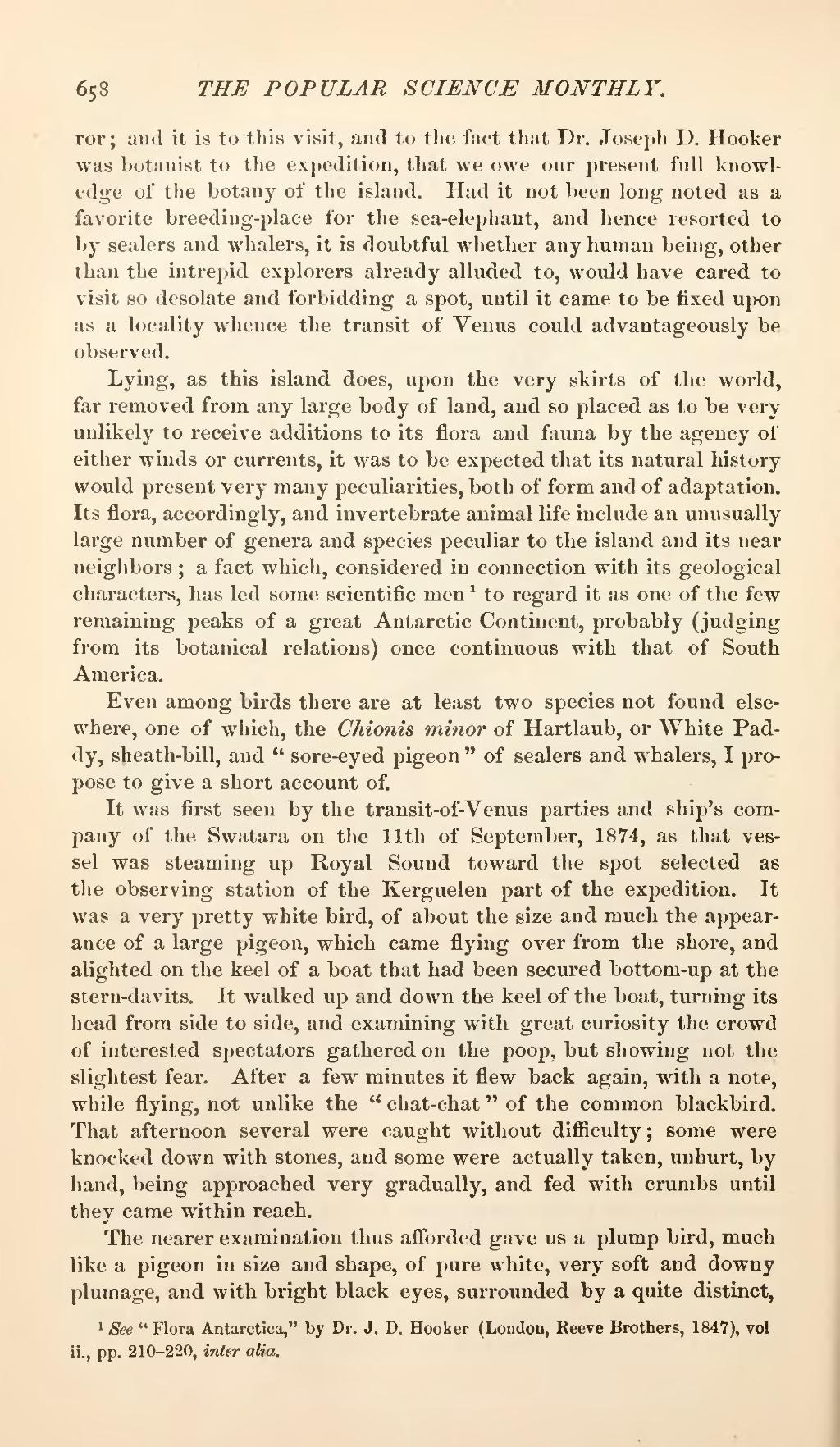ror; and it is to this visit, and to the fact that Dr. Joseph D. Hooker was botanist to the expedition, that we owe our present full knowledge of the botany of the island. Had it not been long noted as a favorite breeding-place for the sea-elephant, and hence resorted to by sealers and whalers, it is doubtful whether any human being, other than the intrepid explorers already alluded to, would have cared to visit so desolate and forbidding a spot, until it came to be fixed upon as a locality whence the transit of Venus could advantageously be observed.
Lying, as this island does, upon the very skirts of the world, far removed from any large body of land, and so placed as to be very unlikely to receive additions to its flora and fauna by the agency of either winds or currents, it was to be expected that its natural history would present very many peculiarities, both of form and of adaptation. Its flora, accordingly, and invertebrate animal life include an unusually large number of genera and species peculiar to the island and its near neighbors; a fact which, considered in connection with its geological characters, has led some scientific men[1] to regard it as one of the few remaining peaks of a great Antarctic Continent, probably (judging from its botanical relations) once continuous with that of South America.
Even among birds there are at least two species not found elsewhere, one of which, the Chionis minor of Hartlaub, or White Paddy, sheath-bill, and "sore-eyed pigeon" of sealers and whalers, I propose to give a short account of.
It was first seen by the transit-of-Venus parties and ship's company of the Swatara on the 11th of September, 1874, as that vessel was steaming up Royal Sound toward the spot selected as the observing station of the Kerguelen part of the expedition. It was a very pretty white bird, of about the size and much the appearance of a large pigeon, which came flying over from the shore, and alighted on the keel of a boat that had been secured bottom-up at the stern-davits. It walked up and down the keel of the boat, turning its head from side to side, and examining with great curiosity the crowd of interested spectators gathered on the poop, but showing not the slightest fear. After a few minutes it flew back again, with a note, while flying, not unlike the "chat-chat" of the common blackbird. That afternoon several were caught without difficulty; some were knocked down with stones, and some were actually taken, unhurt, by hand, being approached very gradually, and fed with crumbs until they came within reach.
The nearer examination thus afforded gave us a plump bird, much like a pigeon in size and shape, of pure white, very soft and downy plumage, and with bright black eyes, surrounded by a quite distinct,
- ↑ See "Flora Antarctica," by Dr. J. D. Hooker (London, Reeve Brothers, 1847), vol ii., pp. 210-220, inter alia.
